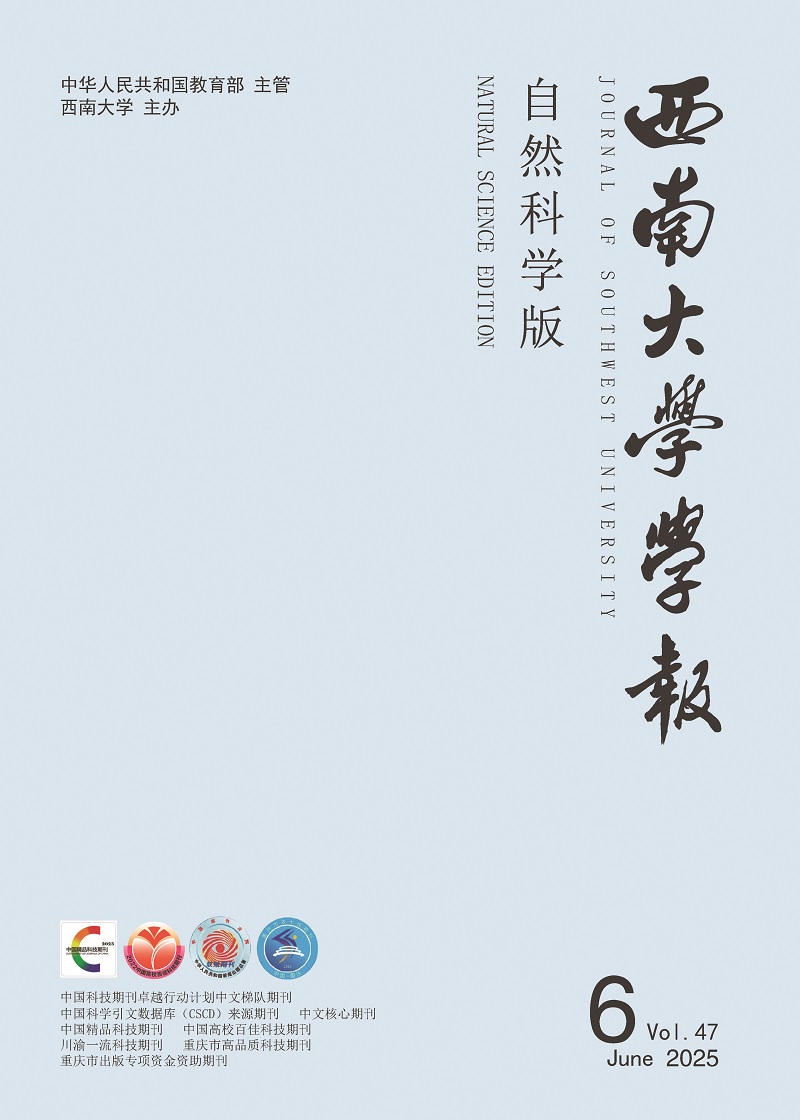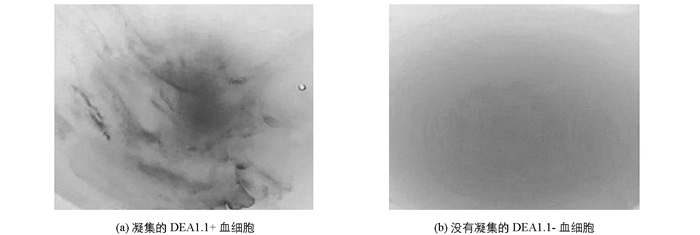-
犬红细胞的细胞膜上具有特异性糖蛋白,这些表面蛋白是多态的,形成不同的犬血型,犬有8种主要血型抗原[1-2],其中犬DEA1.1血型抗原最具有免疫原性,因此DEA 1.1血型是临床上最容易引起输血反应的血型[3-4].有文献报道当抗原性强的DEA1.1+红细胞在不恰当输血情况下将会触发DEA1.1-犬的免疫反应,出现以发热、色素尿和昏睡为特征的症状[5]. 20世纪60年代使用多克隆抗体进行的研究发现DEA1血型系统含有3个等位基因,根据其基因显性程度从大到小排序为DEA1.1>1.2>1.3,这3种红细胞的抗原性均强于DEA1-[6-7]. DEA 1.2常见于野犬中,而在家犬中却少见,而DEA1.3只发现于澳洲,往往只出现于牧羊犬[6].因此,DEA1.1血型在临床上最重要,是输血前必须检查的项目之一[8].
目前在国际上DEA1.1血型检测的方法已经出现,如柱凝胶检测血型法、卡片检测血型法和免疫色谱柱法等[9-10].经过实验发现柱凝胶检测血型法虽然具有100%准确的特点,但该方法需要非常专业的离心机来配合凝胶柱,导致一般的基层医疗单位不能使用此方法检测血型,该方法不宜进行商业推广[9].免疫色谱柱法虽然具有100%特异性,但准确率只有93%[10].相比较而言,由于血型鉴定卡法使用简单,容易携带,目前应用广泛[11],但其易受天气环境等因素影响,准确性还需要进步一步确认.
国内血型检测比较落后,采血和输血还处于“现采现用”冒有巨大输血反应风险的阶段[12].一些动物医疗单位使用未知血型的进口犬作为供血犬,而没有充分利用具有丰富资源适应性强的本地犬种,导致资源错配和浪费.虽然同为亚洲犬种,日本对本地犬(特别是日本柴犬)的研究利用情况明显好于中国[13].为了减少输血反应风险,一些动物医疗单位在寻找没有输血反应风险的“万能供血犬”.虽然目前国际上并没有“万能供血犬”的公认标准,但具有DEA1.1-特征是“万能供血犬”必备的条件之一[6, 9].到目前为止,还没有发现真正能“万能供血”的犬.
为了减少动物医疗单位输血反应的风险,探讨中国本地犬种血型情况和作为献血犬来供血的可行性,本研究用血型鉴定卡法和抗体法调查本地犬DEA1.1血型的发生情况,有利于降低输血治疗的经济压力和社会压力,削弱医患矛盾发生的基础,也有利于充分挖掘利用丰富的本地犬资源,提高中国本地犬种的经济和社会价值.
HTML
-
犬DEA1.1 Quick Vet®/RapidVet血型鉴定卡购于美国DMS Laboratories公司;DEA1.1抗体购买于美国密歇根州立大学免疫实验室;Coombs试剂(抗犬球蛋白)购买于美国兽医研究与开发公司(VMRD公司).
-
从2012年到2016年,共收集了236条中华田园犬的血样.为了防止麻醉剂导致的凝聚反应出现,采血检测血型之前不注射麻醉剂.采血方法是剪毛消毒后,在颈静脉处使用乙二胺四乙酸(EDTA)抗凝剂进行抗凝,真空采血管收集血液,4 ℃冷藏保存.
-
DEA1.1 Quick Vet®/RapidVet血型鉴定卡,根据使用说明书,取200 μL全血,滴入犬DEA1.1血型鉴定卡,用牙签搅拌,30°倾斜放置3 min,根据有无凝集现象判定待检犬的血型.
-
(1) 血型的检测
将0.1 mL的DEA1.1抗体加入一滴至待测犬血液中,用牙签搅拌混匀,37 ℃孵育15 min.肉眼判断是否有凝集反应或者溶血反应.
(2) 直接Coombs实验法鉴定微凝集反应
对于上述步骤中没有反应的血样和轻微反应的血样进行直接Coombs法验证,以防漏检.方法是:将上述没有反应血样或轻微反应血样放入10倍体积的PBS洗涤,5 000 r/min离心20 s,弃去上清,如此反复洗涤3遍,加入等量的PBS和0.1 mL Coombs试剂,混合,在37 ℃孵育15 min,5 000 r/min离心20 s,显微镜下检查是否发生了凝集反应,如果发生了凝集反应则判定待检犬的血型为DEA1.1+,如果没有发生凝集反应则判定待检犬的血型为DEA1.1-.
-
采用SPSS统计软件V.15.0进行数据分析.使用卡方检验来比较各组间DEA1.1血型的阳性率.
1.1. 主要试剂
1.2. 实验方法
1.2.1. 血液采集
1.2.2. 血型鉴定卡测定血型
1.2.3. 抗体法测定血型
1.3. 统计分析
-
加入DEA1.1抗体后,用牙签进行搅拌,1 min后发现DEA1.1+犬红细胞呈团块状聚集沉淀于底部,呈云雾状,周围有散在的小凝集块,上清液变得清澈(图 1a).而DEA1.1-犬红细胞没有明显变化,红细胞仍然分布均匀,没有凝集和溶血的现象(图 1b).
-
对于肉眼观察血液凝集不明显的,加入Coombs试剂,然后使用显微镜观察,发现DEA1.1+犬红细胞凝集一起,红细胞间分不清界限,有沙粒状的小凝集颗粒出现(有些肉眼也可观察到)(图 2a). DEA1.1-犬红细胞而没有出现血液聚集反应,红细胞仍是均匀分散(图 2b).
-
从2012年到2016年,收集了共236条中华田园犬血样,在收集过后随即使用上述2种方法进行DEA1.1血型调查.血型抗体法检测结果显示,DEA1.1总阳性率为54.2%(128/236).但雌性犬阳性率(67.1%)显著(p<0.05)高于DEA1.1雄性犬的阳性率(48.1%)(表 1).使用血型鉴定卡法对上述收集的犬血液样本进行血型鉴定,实验操作方法见实验步骤1.2.2,以达到对抗体法血型检测结果进行验证的目的,实验结果发现2个血型鉴定结果完全一致,重复率为100%.
2.1. 肉眼观察血液凝集现象
2.2. 直接Coombs实验鉴定红细胞微凝集反应
2.3. 血型调查
-
为了减少输血不良反应和提高输注的红细胞存活时间,血型检测是西方发达国家兽医服务的重要组成部分,也是向畜主推荐检查的项目之一[14-15].由于DEA1.1血型具有强烈的免疫原性[6, 14],可以诱导DEA1.1-血型犬产生抗DEA1.1抗体,导致出现严重的输血反应[5].中华田园犬等本地犬广泛地分布于中华大地,数量多,范围大,可用资源丰富.本研究调查了本土中华田园犬DEA1.1+和DEA1.1-血型的占比情况,为丰富本地犬种的利用提供血型鉴定方法,为帮助基层动物医疗单位寻找有效的供血犬,降低输血反应风险做输血风险预测研究.此外,本研究也做了中华田园犬一些表型性状和发生率之间的关联分析,发现雌性的中华田园犬DEA1.1阳性率显著高于雄性犬(p<0.05).
本研究发现抗体法检测犬血型时,有时会出现肉眼不易观察的凝集反应,因此采用直接Coombs实验来确认待测犬血型,从而确保抗体法鉴定血型的准确率,此方法较繁琐,但价格便宜.本研究使用血型鉴定卡法和抗体法测定血型,发现结果完全一致,相互印证,说明血型鉴定卡法和抗体法测血型准确率都很高,都能够用于犬血型的测定[11].用血型鉴定卡法测定犬血型方便快捷、结果准确,但价格相对较高,对于大量的犬血型调查,推荐使用抗体法检测犬血型.
由于品种和地域不同会导致DEA1.1血型阳性率的差异,高DEA1.1阳性率将会导致不利的输血反应率升高[3, 16].本研究发现中华田园犬DEA1.1的阳性率为54.2%,远低于Ibizan猎犬(75%)[17],但比美国本地犬(42%)高[3, 18].本研究结果与在中国广州检测68份犬血样100%为DEA1.1阳性的调查结果不一致[19].中华田园犬DEA1.1阳性率较高的原因可能是由于中国本地犬大多不重视品种培育,来自不同地方的中华田园犬杂交繁殖严重,显性DEA1.1基因提高了DEA1.1的阳性率,本研究结果和国外杂种犬DEA1.1阳性率较高的结果一致[17].
本研究首次阐述了中国本地犬种的DEA1.1发生率,为基层医疗单位输血和血库的建立做了输血反应风险预测研究.建议在输血治疗之前,供血犬和受血犬均需要进行DEA1.1血型检测.对于缺乏血型检测试剂和检测实验室的基层医疗单位,建议提前物色价廉物美的DEA1.1-本地犬(尤其是纯种的雄性中华田园犬)作为供血犬,在需要紧急输血时可以给未知血型的犬输血.








 DownLoad:
DownLoad: